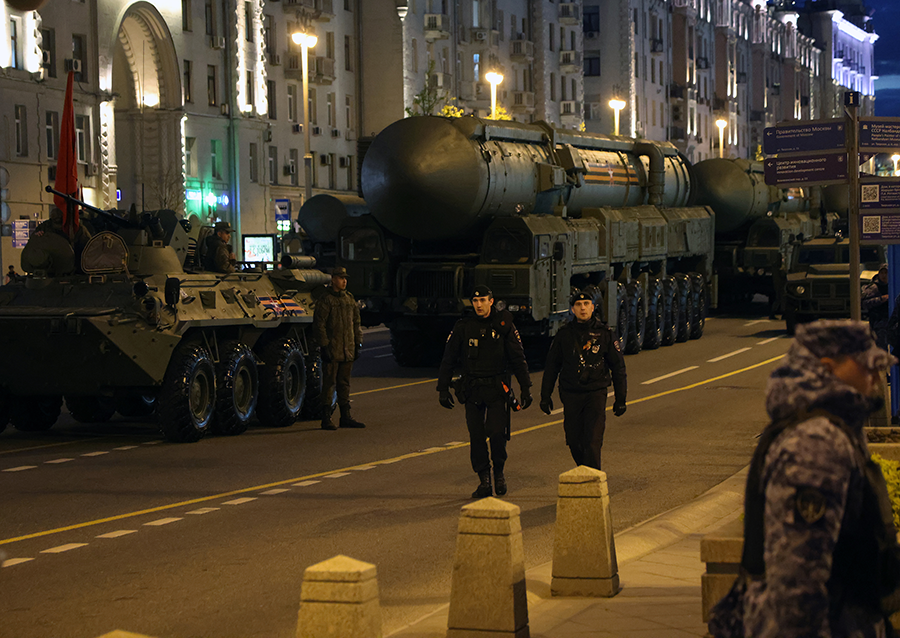Russia Mulls U.S. Arms Control Proposal
December 2023
By Shannon Bugos
Russia said it will consider and respond to the formal written arms control proposal from the United States, which announced the proposal in June but did not transmit it until September.
 The Wall Street Journal first reported on Nov. 1 that Washington sent Moscow a proposal in September. A senior Biden administration official told the newspaper that the United States awaits a response but hopes to initiate “a conversation on what a framework after New START could look like,” referring to the 2010 New Strategic Arms Reduction Treaty expiring in 2026.
The Wall Street Journal first reported on Nov. 1 that Washington sent Moscow a proposal in September. A senior Biden administration official told the newspaper that the United States awaits a response but hopes to initiate “a conversation on what a framework after New START could look like,” referring to the 2010 New Strategic Arms Reduction Treaty expiring in 2026.
The proposal reflected U.S. National Security Advisor Jake Sullivan’s speech in June at the Arms Control Association annual meeting and “added additional details,” Pranay Vaddi, senior director for arms control, disarmament, and nonproliferation at the U.S. National Security Council, told the Russian newspaper Kommersant on Nov. 3. (See ACT, July/August 2023.)
“Russia has not responded to it, but [Russian Deputy Foreign Minister Sergei] Ryabkov said Russian authorities are working on a response,” Vaddi added.
Kremlin spokesperson Dmitry Peskov has expressed skepticism that Russian-U.S. nuclear arms control talks would occur. “Dialogue is unequivocally necessary,” he said on Nov. 8. “But so far, the actual situation has not changed in any way.” Moscow repeatedly has stated that, as a precursor to any nuclear arms control talks, Washington must first withdraw support from Ukraine. (See ACT, April 2023.)
Meanwhile, Russian President Vladimir Putin and other Russian officials have boasted about having what they called a superior Russian nuclear arsenal. No one “in their right mind would consider using nuclear weapons against Russia,” Putin said on Oct. 5.
A month later, Russian Security Council Secretary Nikolai Patrushev touted that, “[f]or the first time in the history of the existence of nuclear weapons, our country is ahead of its competitors in the [nuclear] domain.”
Russia launched its annual nuclear exercise, known as Grom, on Oct. 25, but it proved relatively scaled down compared to exercises in previous years.
“Putin led a training exercise that involved the forces and resources of the ground, sea, and air components of Russia’s nuclear deterrence forces,” the Kremlin said in a statement.
“The exercise included practical launches of ballistic and cruise missiles,” it added.
Russian Defense Minister Sergei Shoigu said that this year’s exercise involved “delivering a massive nuclear strike by strategic offensive forces in response to an enemy nuclear strike.”
Meanwhile, NATO held its annual exercise for 10 days beginning Oct. 16. Known as Steadfast Noon, the exercise included the participation of 13 allied countries and more than 60 aircraft taking part in training flights over Italy, Croatia, and the Mediterranean Sea.
“The exercise involves fighter aircraft capable of carrying nuclear warheads, but does not involve any live bombs,” the alliance said in a statement on Oct. 13. “The exercise is not linked to current world events and the bulk of the training is held at least 1,000 kilometers from Russia’s borders.”
After the exercises ended, Shoigu warned of “the threat of a direct military clash between nuclear powers,” laying blame on the United States for its “steady escalation” of conflict and its destruction of “the foundations of international security and strategic stability,” including arms control agreements.
